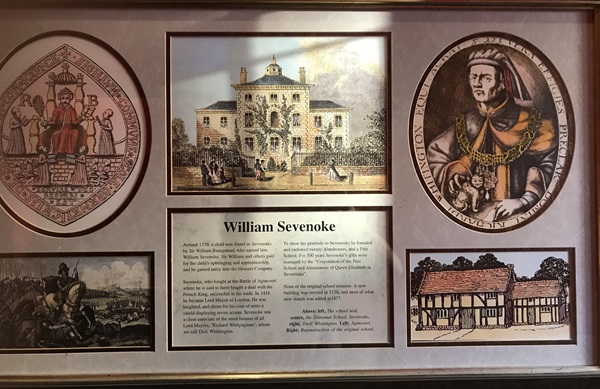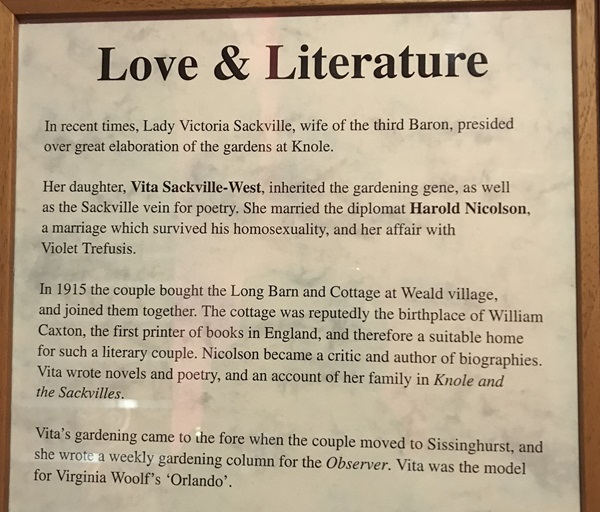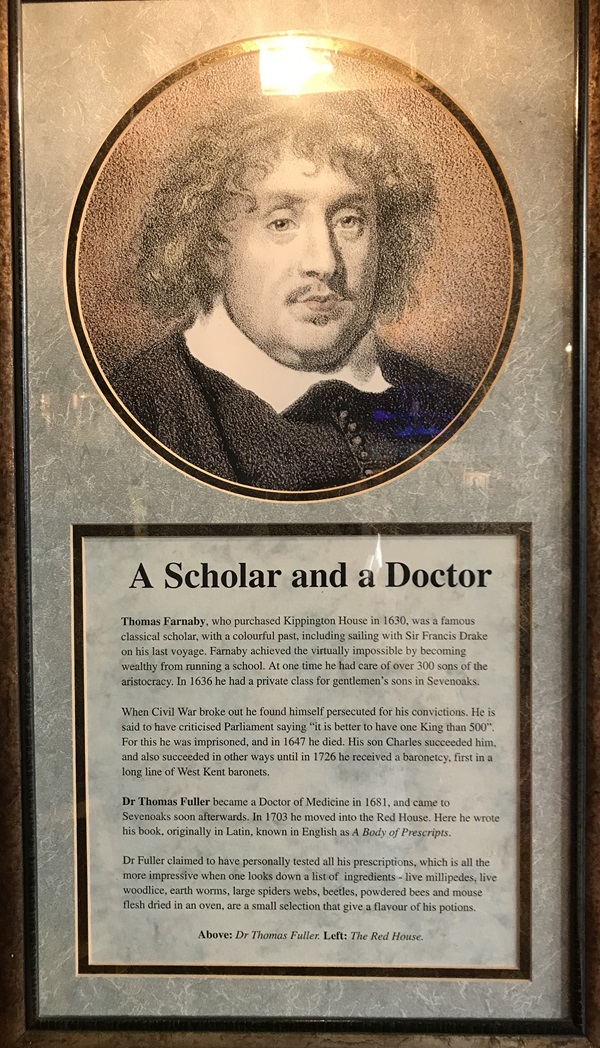139–141 High Street, Sevenoaks, Kent, TN13 1UX
The town takes its name from the Saxon word ‘Seouenaca’, meaning seven oaks. Its inhabitants are known as Sennockians. Sevenoaks actually began life as a small ‘hospital’, erected in Saxon times to offer protection to travellers. It was dedicated to St Nicholas and became a church in 1114, part of the Archbishop of Canterbury’s manor of Otford.
Illustrations and text about William Sevenoke.

The text reads: Around 1370, a child was found in Sevenoaks by Sir William Rumpstead, who named him William Sevenoke. Sir William and others paid for the child’s upbringing and apprenticeship, and he gained entry into the Grocers Company.
Sevenoke, who fought the Battle of Agincourt where he is said to have fought a dual with the French King, succeeded in his trade. In 1418, he became Lord Mayor of London. He was knighted, and chose for his coat of arms a shield displaying seven acorns. Sevenoke was a close associate of the most famous of all Lord Mayors, ‘Richard Whityngtone’, whom we call Dick Whittington.
To show his gratitude to Sevenoaks he founded and endowed twenty Almshouses, and a free school. For 300 years Sevenoke’s gifts were managed by the Corporation of the Free School and Almshouses of Queen Elizabeth in Sevenoaks.
None of the original school remains. A new building was erected in 1730, and most of what now stands was added in 1877.
Above: left, the school seal, centre, the Grammar School, Sevenoaks, right, Rick Whittington
Left: Agincourt
Right: Reconstruction of the original school.
Text about local literature and love.

The text reads: In recent times, Lady Victoria Sackville, wife of the third Baron, presided over great elaboration of the gardens at Knole.
Her daughter, Vita Sackville-West, inherited the gardening gene, as well as the Sackville vein for property. She married the diplomat Harold Nicolson, a marriage which survived his homosexuality, and her affair with Violet Trefusis.
In 1915 the couple bought the Long Barn and Cottage at Weald village, and joined them together. The cottage was reputedly the birthplace of William Caxton, the first printer of books in England, and therefore a suitable home for such a library couple. Nicolson became a critic and author of biographies. Vita wrote novels and poetry, and an account of her family in Knole and the Sacksville.
Vita’s gardening came to the fore when the couple moved to Sissinghurst, and she wrote a weekly gardening column for the Observer. Vita was the model for Virginia Woolf’s Orlando.
An illustration and text about Thomas Farnaby and Dr Thomas Fuller.

The text reads: Thomas Farnaby, who purchased Kippington House in 1630, was a famous classical scholar, with a colourful past, including sailing with Sir Francis Drake on his last voyage. Farnaby achieved the virtually impossible by becoming wealthy from running a school. At one time he had care for over 300 sons of the aristocracy. In 1636 he had a private class for gentlemen’s son in Sevenoaks.
When Civil War broke out he found himself persecuted for his convictions. He is said to have criticised Parliament saying “it is better to have one King than 500”. For this he was imprisoned, and in 1647 he died. His son Charles succeeded him, and also succeeded in other ways until in 1726 he received a baronetcy, first in a long line of West Kent baronets.
Dr Thomas Fuller became a Doctor of Medicine in 1681, and came to a Sevenoaks soon afterwards. In 1703 he moved into the Red House. He wrote his book, originally in Latin, known in English as A Body of Prescripts.
Dr Fuller claimed to have personally tested all his prescription, which is all the more impressive when one looks down a list of ingredients – live millipedes, live woodlice, earth worms, large spider’s webs, beetles, powdered bees and mouse flash dried in an oven, are a small selection that give a flavour of his potions.
Above: Dr Thomas Fuller
Left: The Red House.
If you have information on the history of this pub, then we’d like you to share it with us. Please e-mail all information to: pubhistories@jdwetherspoon.co.uk